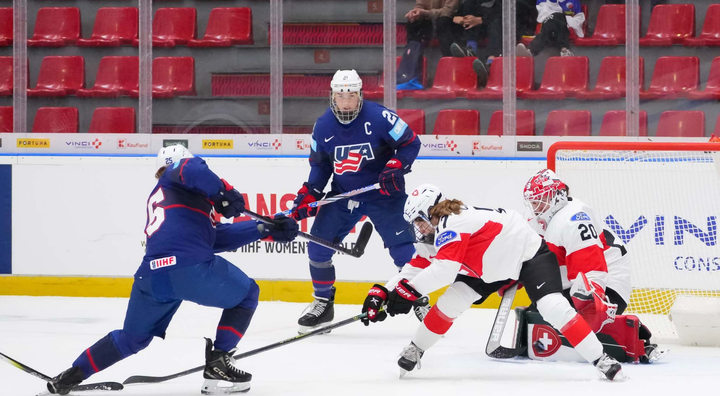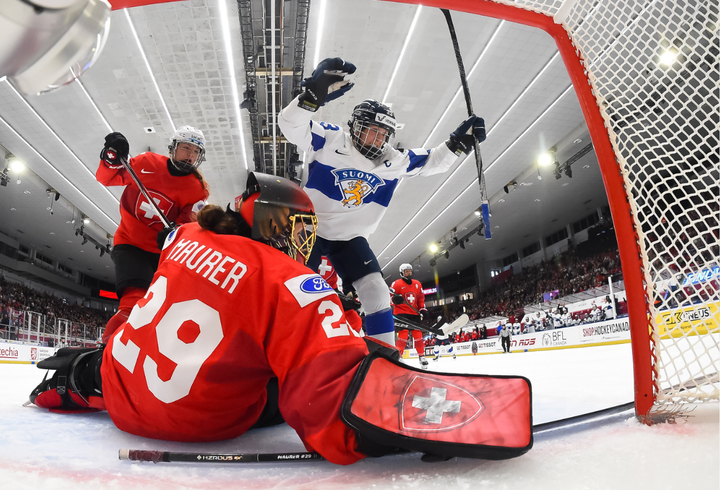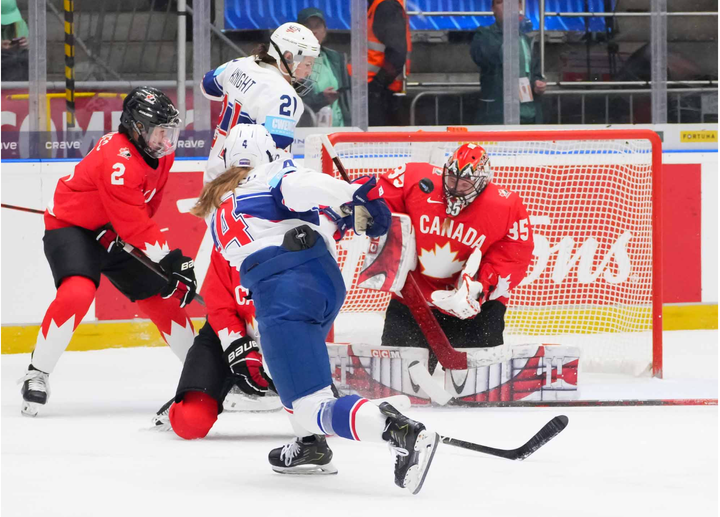Breaking down the CWHL’s Open Letter
“The closure of the CWHL – while significant – will be a small bump in the continued growth of this amazing and competitive global sport.”
Last night, Laurel Walzak, the Chair of the CWHL’s Board of Directors, sent out a five-page open letter to select members of the media. Today, that letter became available to the public when the league posted it on the league’s site, which has been effectively shut down.
The Board’s letter offers a synopsis on the thought process behind the league’s decision to cease operations, an expression of gratitude to fans, players, staff, media, organizations, and influential individuals, and an opinion on what needs to change in professional women’s hockey.
On behalf of the Board of Directors of the CWHL attached is the final public communication - OPEN LETTER TO FANS, SPONSORS, DONORS, PARTNERS AND HOCKEY INDUSTRY IN CANADA, THE USA, AND CHINA, PLUS THE CANADIAN GOVERNMENT https://t.co/HnfUGMrI94
— CWHL (@TheCWHL) July 3, 2019
Furthermore, the CWHL’s Board stated its full support of the #ForTheGame movement and the action taken by players involved in the PWHPA:
This is where the Board of Directors 100% supports the players in their movement for one truly sustainable league. We believe it is encouraging that 200+ of the world’s best women players have formed a new players association, which will help ensure players’ needs are met in the future. To the players: we encourage you to be clear about what you need on the topics of compensation, training, insurance, equipment, ice-time, broadcast coverage, corporate endorsements and sponsorship. We support you and will always be grateful for what you have done and continue to do for women’s hockey. Don’t settle for second best. #FORTHEGAME
As you can imagine, there’s a lot to unpack here and plenty to read between the lines.
The Cost of Business
The CWHL had expenses of $4.2 million CDN in its final season. The league’s board believes that it takes somewhere between $5 million and $6 million CDN to run the league “adequately” and twice that amount to run it professionally. The Board made a point of mentioning that donations from the public were very helpful, and that the amount raised this year as opposed to previous years wasn’t a factor in the decision to shut down.
Related
CWHL to cease operations on May 1, 2019
While the CWHL did have sponsors, it didn’t attract as many as it needed to keep its head above water. Other factors, including competition from the NWHL and some sponsors and partners donating gifts in lieu of cash, played a significant role in the CWHL’s inadequate revenue. The Board also stated that many sponsors expressly held off on investing because they wanted to wait and see whether or not the league would merge with the NWHL.
The league’s revenue, excluding what was brought in from its partnership with China, has been static while operating costs have only increased. Furthermore, the league could not change it’s business model to a private, for-profit organization without losing benefits including health insurance coverage from its governing body, Hockey Canada.
The CWHL’s decision to begin paying its players added approximately $600,000 CDN in expenses to operating costs. The league began paying its players for the first time in 2017-18, after its expansion into China.
China
When Kunlun Red Star and the Shenzhen Vanke Rays merged into a single team before the 2018-19 season — the Shenzhen KRS Vanke Rays — the revenue that the CWHL received from China was reduced. In some ways, the partnership with China served as life support for the league.
The Board expressed its gratitude for its partnership with China over the past two seasons. They stated that the partnership came about due to competition — a clear allusion to the NWHL — and a need for cash in addition to providing a unique opportunity to expand its reach and grow the game.
Without China, it’s possible that the league may have folded sooner. Although, it’s unclear how much of a role the NWHL played in the league’s decision to fold shortly after the 2019 Clarkson Cup Playoffs.
The NWHL
According to the Board, the creation of the NWHL “fragmented the potential” of new opportunities for revenue from sponsors.
The Board believes that the misconceptions surrounding the public demand for “one league” created confusion and unrealistic expectations in the marketplace. As many expected, it was impossible for the CWHL to simply merge with the NWHL.
Related
The legal reality of #OneLeague
As an RCAAA (Registered Canadian Amateur Athletic Association), the CWHL could not merge with a for-profit league. The CWHL’s not-for-profit model and RCAAA designation also prevented the league from new sources of income, including franchising, and made paying its players a professional salary impossible.
At no point in the Board’s open letter is the NWHL addressed by its name. There is also nothing in the letter that directly addresses whether or not the CWHL decided to pay its players for the first time in 2016-17 because the NWHL paid its players.
A Helping Hand
The Board stated that it was in “severe financial distress” on April 1 and was faced with the prospect of being unable to pay its players, staff, and creditors. The CWHL was saved from that crisis thanks to donations from the NHL, Hockey Canada, the Ontario Women’s Hockey League, the Toronto Maple Leafs, the Calgary Flames, a private Canadian citizen, a private American citizen, and an anonymous corporation. The league also raised $93,000 CDN in the sale of merchandise and memorabilia in the months of April and May to help address those costs.
Related
The Next League
It’s clear that at least part of the purpose behind the Board’s open letter is to spark a public discussion about the future of professional women’s hockey. The Board calls for governments, businesses, associations, and leagues to step in and change the way we think about operating professional women’s hockey. In other words, those parties need to start investing in the sport now.
It came as no surprise to see the Board state that players should not settle for anything less than a living wage. The board calls for the next league to close the gap between the salary for pro men and pro women’s players, citing that women make a modest stipend between $1,000 and $10,000 a year compared to the nearly seven-digit figure that represents the minimum salary for an NHL player.
Successors to the CWHL must find a way for the best women to earn a full salary. We keep hearing it is not about the money, but it is about the money, the revenues, the investments, the profits and so to truly advance this game, settling for a non-living wage to play this game ‘professionally’ should not be tolerated.
The CWHL’s Board sees the PWHPA as a step in the right direction. It also believes that there is room for only one professional league in North America, and that businesses and the one league must cooperate with the PWHPA.
There are no direct calls for the NHL for further involvement or a WNHL, but the Board does state that women’s teams would greatly benefit from sharing hockey facilities with men’s teams. The Board also clearly believes that there is great value in forming partnerships with men’s teams to keep operating costs low and to allow more resources to go directly to grow the game.





Comments ()